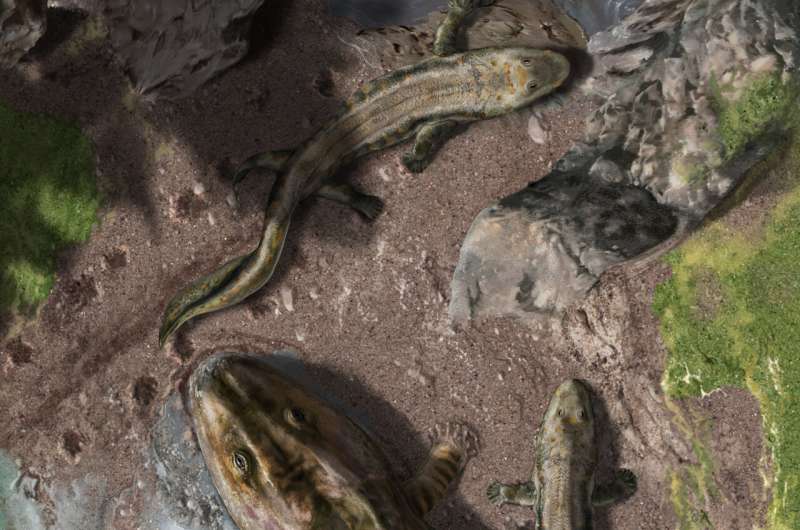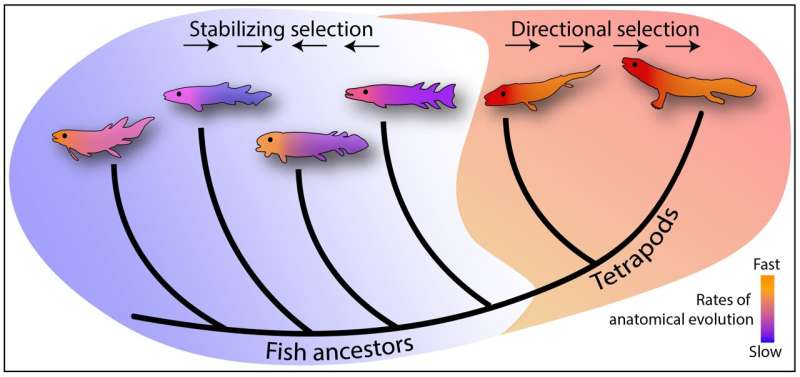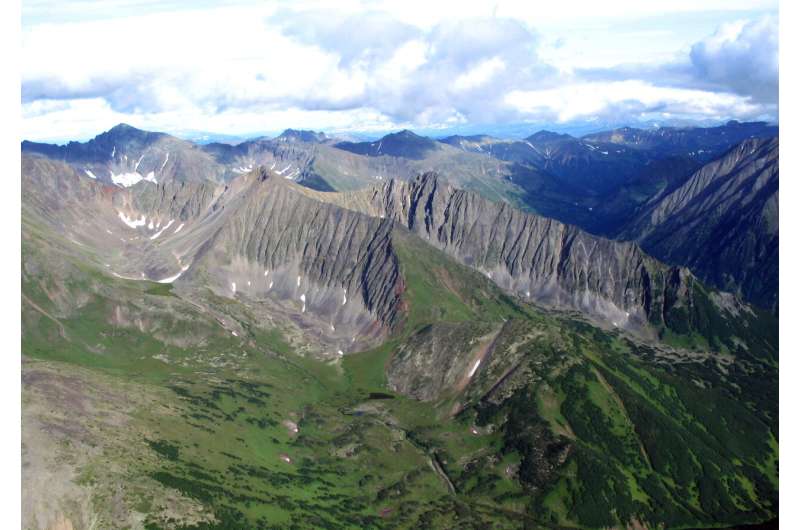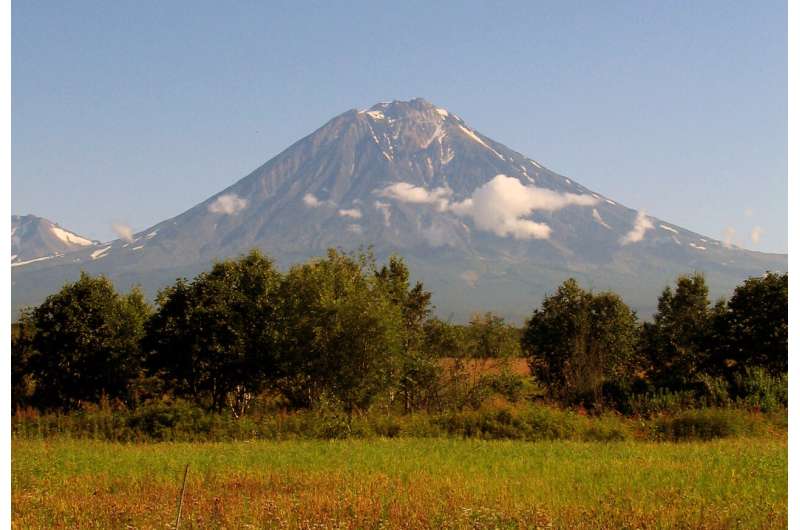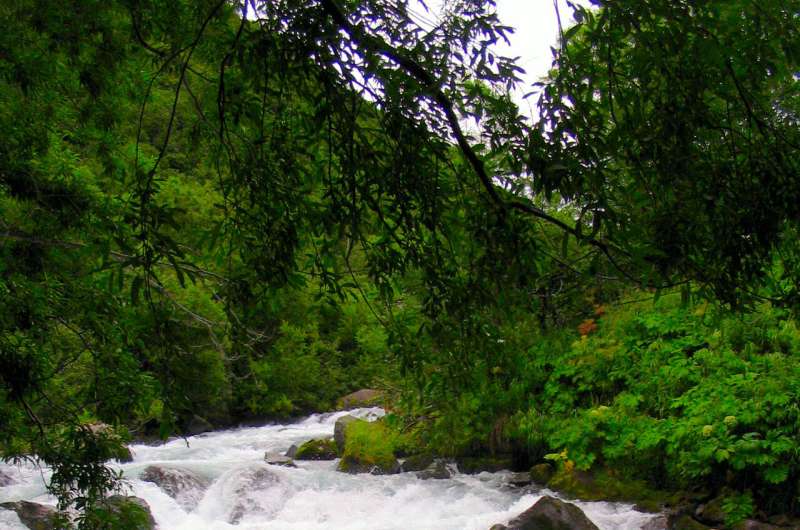The science of ants' underground cities
Picture an anthill. What do you see? A small mound of sand and crumbly dirt poking up through the lawn? A tiny hole disappearing into the ground? A few ants scrambling around busily. Not very impressive, right?
But slip beneath the surface and the above-ground simplicity gives way to subterranean complexity. Tunnels dive downward, branching and leading to specialized chambers that serve as home for the colony's queen, as nurseries for its young, as farms for fungus cultivated for food, and as dumps for its trash. These are not just burrows. They are underground cities, some of them home to millions of individuals, reaching as far as 25 feet underground, often lasting for decades.
This kind of construction would be an impressive undertaking for most creatures, but when performed by animals that don't get much bigger than your fingernail, it is especially remarkable.
Now, driven by the desire to improve our own ability to dig underground—whether it is for mining, subways or underground farming—a team of researchers from Caltech has unraveled one of the secrets behind how ants build these amazingly complex and stable structures.
Led by the laboratory of Jose Andrade, the George W. Housner Professor of Civil and Mechanical Engineering, the team studied the digging habits of ants and uncovered the mechanisms guiding them. The research is described in a paper published in the journal Proceedings of the National Academy of Sciences.
What are ants thinking (if anything)?
Before beginning this research, Andrade, who is also the Cecil and Sally Drinkward Leadership Chair and Executive Officer for Mechanical and Civil Engineering, had a big question he wanted to answer: Do ants "know" how to dig tunnels, or are they just blindly digging?
"I got inspired by these exhumed ant nests where they pour plastic or molten metal into them and you see these vast tunnel systems that are incredibly impressive," Andrade says. "I saw a picture of one of these next to a person and I thought 'My goodness, what a fantastic structure.' And I got to wondering if ants 'know' how to dig."
"We didn’t interview any ants to ask if they know what they're doing, but we did start with the hypothesis that they dig in a deliberate way," Andrade says. "We hypothesized that maybe ants were playing Jenga."
What he means by "playing Jenga" is that the team suspected the ants were feeling their way around in the dirt, looking for loose grains of soil to remove, in much the same way a person playing Jenga checks for loose blocks that are safe to take out of the stack. The blocks that can't be removed—the ones bearing the load of the stack—are said to be part of the structure's 'force chains,' the collection of pieces jammed together by the forces placed on them.
"We hypothesized that the ants could sense these force chains and avoided digging there," Andrade says. "We thought maybe they were tapping grains of soil, and that way they could assess the mechanical forces on them."
Ants do what they want
To learn about ants, the team needed to have ants to study. But Andrade is an engineer, not an entomologist (someone who studies insects), so he enlisted the help of Joe Parker, assistant professor of biology and biological engineering, whose research focuses on ants and their ecological relationships with other species.
"What Jose and his team needed was somebody who works with ants and understands the adaptive, collective behaviors of these social insects to give them some context for what they were doing," Parker says.
With Parker on board, the team started culturing ants and learning how to work with them. It was a process that took nearly a year, Andrade says. Not only did they need to breed enough ants to work with, there was a lot of trial and error involved in getting the ants to dig in little cups of soil that they could load into an X-ray imager. Through that work, they determined an optimal size of cup to use, and an ideal number of ants to put in each cup. Still, the ants did not always cooperate with the researchers' own priorities.
"They're sort of capricious," Andrade says. "They dig whenever they want to. We would put these ants in a container, and some would start digging right away, and they would make this amazing progress. But others, it would be hours and they wouldn’t dig at all. And some would dig for a while and then would stop and take a break."
But once the ants got going, the researchers would take the little cups and X-ray them using a technique that created a 3-D scan of all the tunnels inside. By taking a series of these scans, letting the ants work a little bit between each, the researchers could create simulations showing the progress the ants made as they extended their tunnels further and further below the surface.
The caterpillar is protected by “Kropotkin” ants – Small Meat Ant Iridomyrmex sp. The ants provide protection in return for sugary fluids secreted by caterpillar. Imperial Hairstreaks will only return to breed where both caterpillar food plants and the ants are present. Kropotkin is a reference to Russian biologist Peter Kropotkin who proposed a concept of evolution based on “mutual aid” between species helping species from ants to higher mammals survive.
Understanding ant physics
Next, Andrade's team set about analyzing what the ants were actually doing as they worked, and a few patterns emerged. For one, Andrade says, the ants tried to be efficient as possible. That meant they dug their tunnels along the inside edges of the cups, because the cup itself would act as part of their tunnels' structures, resulting in less work for them. They also dug their tunnels as straight as possible.
"That makes sense because a straight line is the shortest path between two points," Andrade says. "And with them taking advantage of the sides of the container, it shows that the ants are very efficient at what they do."
The ants also dug their tunnels as steeply as they possibly could, right up to what's known as the angle of repose. That angle represents the steepest angle that a granular material—a material made of individual grains—can be piled up before it collapses. To understand the angle of repose, picture a child building a sand castle at the beach. If the child uses dry sand, every scoop of sand they add will slide down the sides of the pile they've already made. More sand will make the pile taller, but also wider, and it will never get steeper. On the other hand, if the child uses wet sand, they will be able to pile the sand steeply enough to build walls, and towers, and all the other things a sand castle might have. Wet sand has a higher angle of repose than dry sand, and every granular material has an angle that is unique to it. The ants, Andrade says, can tell how steep that angle is for whatever they're digging in, and they don't exceed it. That, too, makes sense, he says.
"If I'm a digger, and I'm going to survive, my digging technique is going to align with the laws of physics, otherwise my tunnels are going to collapse and I'm going to die," he says.
Finally, the team discovered something about the physics of ant tunnels that could one day be useful to humans.
As ants remove grains of soil they are subtly causing a rearrangement in the force chains around the tunnel. Those chains, somewhat randomized before the ants begin digging, rearrange themselves around the outside of the tunnel, sort of like a cocoon or liner. As they do so, two things happen: 1.) the force chains strengthen the existing walls of the tunnel and 2.) the force chains relieve pressure from the grains at end of the tunnel where the ants are working, making it easier for the ants to safely remove them.
"It's been a mystery in both engineering and in ant ecology how ants build these structures that persist for decades," Parker says. "It turns out that by removing grains in this pattern that we observed, the ants benefit from these circumferential force chains as they dig down."
But what about the central question of the team's hypothesis? Are ants aware of what they're doing when they dig?
What ants know and don't
"What we discovered was that they didn’t seem to 'know' what they are doing," Andrade says. "They didn’t systematically look for soft spots in the sand. Rather, they evolved to dig according to the laws of physics."
Parker calls this a behavioral algorithm.
"That algorithm does not exist within a single ant," he says. "It's this emergent colony behavior of all these workers acting like a superorganism. How that behavioral program is spread across the tiny brains of all these ants is a wonder of the natural world we have no explanation for."
Andrade says he hopes to begin working on an artificial intelligence approach that can emulate that behavioral algorithm so he can simulate how ants dig on a computer. Part of that emulation, Andrade says, will be determining how to scale ant physics for human-sized tunnels.
"Granular materials scale in different ways than other materials like fluids or solids," he says. "You can go from experiments at the grain scale, in this case a few millimeters, to the meter scale, by scaling the intergranular friction coefficient."
The next step after that? Robotic ants that could dig tunnels for humans.
"Moving granular materials is very energy intensive, and it's very expensive and you always need an operator there running the machines," he says. "This would be the final frontier."
###
The paper describing the research, titled, "Unearthing real time 3D ant tunneling mechanics," appears in the August 23 issue of the journal Proceedings of the National Academy of Sciences.
Co-authors are Robert Buarque de Macedo, applied mechanics graduate student; Shilpa Joya, a former PhD student at Caltech; Edward Andò and Gioacchino Viggiani of Université Grenoble Alpes; and Raj Kumar Pal of Kansas State University.
Funding for the research was provided by a grant from the United States Army Research Office.
JOURNAL
Proceedings of the National Academy of Sciences
ARTICLE TITLE
Unearthing real time 3D ant tunneling mechanics
ARTICLE PUBLICATION DATE
23-Aug-2021
